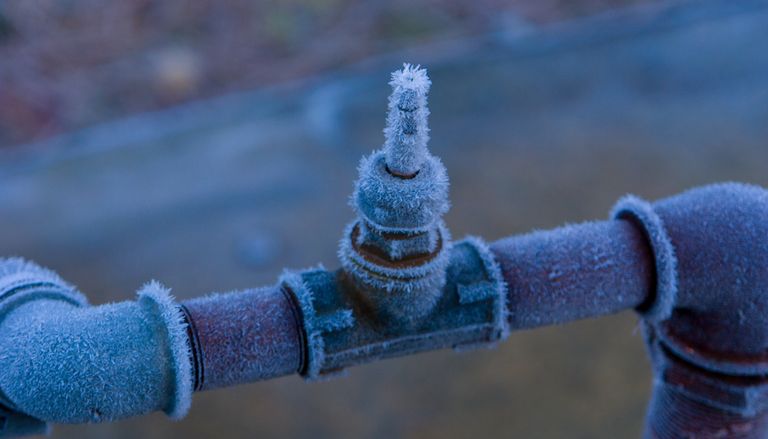Important Tips to Prevent Frozen Plumbing in Winter
Important Tips to Prevent Frozen Plumbing in Winter
Blog Article
The article directly below pertaining to Prevent Frozen Pipes is indeed insightful. Read it yourself and see what you think of it.
:strip_icc()/snow-outdoor-faucet-pipes-4af65d1e5e904fb1aa7bf74071fe5d89.jpg)
Winter can ruin your plumbing, especially by freezing pipelines. Below's just how to prevent it from occurring and what to do if it does.
Intro
As temperature levels decrease, the threat of icy pipes rises, potentially resulting in costly repairs and water damage. Recognizing how to avoid icy pipelines is vital for home owners in chilly climates.
Recognizing Icy Pipes
What creates pipes to ice up?
Pipelines freeze when subjected to temperature levels below 32 ° F (0 ° C) for extended durations. As water inside the pipes freezes, it increases, putting pressure on the pipe walls and potentially triggering them to burst.
Risks and problems
Icy pipelines can cause water supply interruptions, residential property damages, and pricey fixings. Burst pipelines can flooding homes and create substantial architectural damages.
Signs of Frozen Water Lines
Recognizing frozen pipes early can prevent them from rupturing.
Exactly how to determine frozen pipes
Look for lowered water circulation from faucets, unusual odors or noises from pipes, and noticeable frost on exposed pipelines.
Prevention Tips
Insulating at risk pipelines
Wrap pipes in insulation sleeves or use warm tape to protect them from freezing temperature levels. Focus on pipes in unheated or outside locations of the home.
Home heating techniques
Maintain interior spaces effectively heated, specifically areas with plumbing. Open up cabinet doors to permit warm air to circulate around pipelines under sinks.
Protecting Outside Pipes
Yard tubes and outdoor taps
Disconnect and drain yard hose pipes prior to wintertime. Mount frost-proof faucets or cover outside faucets with insulated caps.
What to Do If Your Pipelines Freeze
Immediate activities to take
If you think frozen pipelines, keep faucets open to ease pressure as the ice thaws. Use a hairdryer or towels soaked in warm water to thaw pipelines gradually.
Long-Term Solutions
Structural changes
Think about rerouting pipelines away from exterior walls or unheated locations. Add added insulation to attics, cellars, and crawl spaces.
Upgrading insulation
Buy premium insulation for pipelines, attics, and walls. Correct insulation helps preserve consistent temperatures and lowers the risk of frozen pipelines.
Verdict
Protecting against frozen pipelines requires positive measures and quick feedbacks. By comprehending the causes, indicators, and preventive measures, house owners can shield their plumbing during winter.
5 Ways to Prevent Frozen Pipes
Drain Outdoor Faucets and Disconnect Hoses
First, close the shut-off valve that controls the flow of water in the pipe to your outdoor faucet. Then, head outside to disconnect and drain your hose and open the outdoor faucet to allow the water to completely drain out of the line. Turn off the faucet when done. Finally, head back to the shut-off valve and drain the remaining water inside the pipe into a bucket or container. Additionally, if you have a home irrigation system, you should consider hiring an expert to clear the system of water each year.
Insulate Pipes
One of the best and most cost-effective methods for preventing frozen water pipes is to wrap your pipes with insulation. This is especially important for areas in your home that aren’t exposed to heat, such as an attic. We suggest using foam sleeves, which can typically be found at your local hardware store.
Keep Heat Running at 65
Your pipes are located inside your walls, and the temperature there is much colder than the rest of the house. To prevent your pipes from freezing, The Insurance Information Institute suggests that you keep your home heated to at least 65 degrees, even when traveling. You may want to invest in smart devices that can keep an eye on the temperature in your home while you’re away.
Leave Water Dripping
Moving water — even a small trickle — can prevent ice from forming inside your pipes. When freezing temps are imminent, start a drip of water from all faucets that serve exposed pipes. Leaving a few faucets running will also help relieve pressure inside the pipes and help prevent a rupture if the water inside freezes.
Open Cupboard Doors
Warm your kitchen and bathroom pipes by opening cupboards and vanities. You should also leave your interior doors ajar to help warm air circulate evenly throughout your home.

As a person who reads about How to Prevent Your Pipes From Freezing, I imagined sharing that excerpt was worthwhile. If you enjoyed reading our blog post plz make sure you remember to share it. Thanks a lot for your time. Return soon.
Appointment Report this page